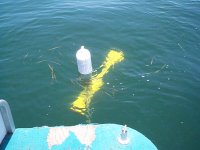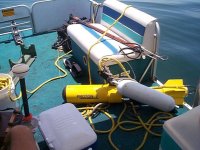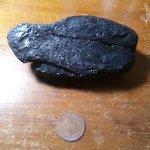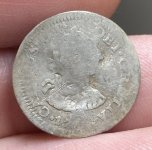Andydiversa
Newbie
- May 28, 2017
- 2
- 0
- Primary Interest:
- All Treasure Hunting
Hi all
I'm apart of a team of technical rebreather dive based in Cape Town, South Africa. Team Underwater Explorers
We have a Aquacscan MC-5, with the logging interface and GPS connection on to a Garmin GPSMAP 168 sounder we also have Lowrance HDS7 Gen2 on the boat. The original owner was using it in the UK, so before it came out to us we had the tow fish replace and tuned to run is South Africa. The tow fish has a 100m cable on it.
We want to use it to find steel shipwreck to dive.
Where we are in South Africa, Cape Town we know there as a lot of steel ship sunk but not found yet. We are looking mainly for shipwreck in the 10m-60m arrange but could go deeper.
We have used the mag a few times over a shipwreck we dive regularly but could do with tips and tricks of the art of finding shipwrecks
Like, how fast you tow the fish?
What direction to tow the fish?
How do people do there search patents?
How to read the data after wards and maps to dive afterwards?
Any other tips your willing to give us, will be usefully as we are very much beginner at this stage.
Thanking you all in advance
Andy
I'm apart of a team of technical rebreather dive based in Cape Town, South Africa. Team Underwater Explorers
We have a Aquacscan MC-5, with the logging interface and GPS connection on to a Garmin GPSMAP 168 sounder we also have Lowrance HDS7 Gen2 on the boat. The original owner was using it in the UK, so before it came out to us we had the tow fish replace and tuned to run is South Africa. The tow fish has a 100m cable on it.
We want to use it to find steel shipwreck to dive.
Where we are in South Africa, Cape Town we know there as a lot of steel ship sunk but not found yet. We are looking mainly for shipwreck in the 10m-60m arrange but could go deeper.
We have used the mag a few times over a shipwreck we dive regularly but could do with tips and tricks of the art of finding shipwrecks
Like, how fast you tow the fish?
What direction to tow the fish?
How do people do there search patents?
How to read the data after wards and maps to dive afterwards?
Any other tips your willing to give us, will be usefully as we are very much beginner at this stage.
Thanking you all in advance
Andy



 >
>



